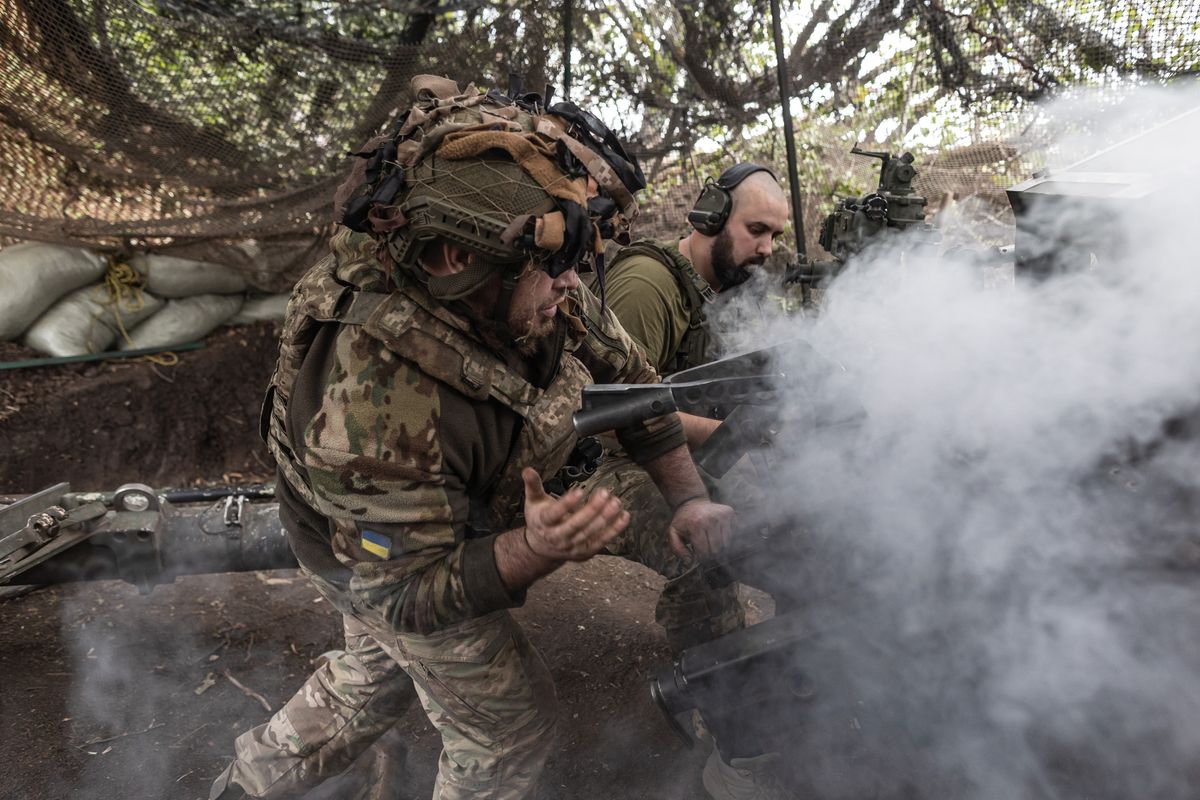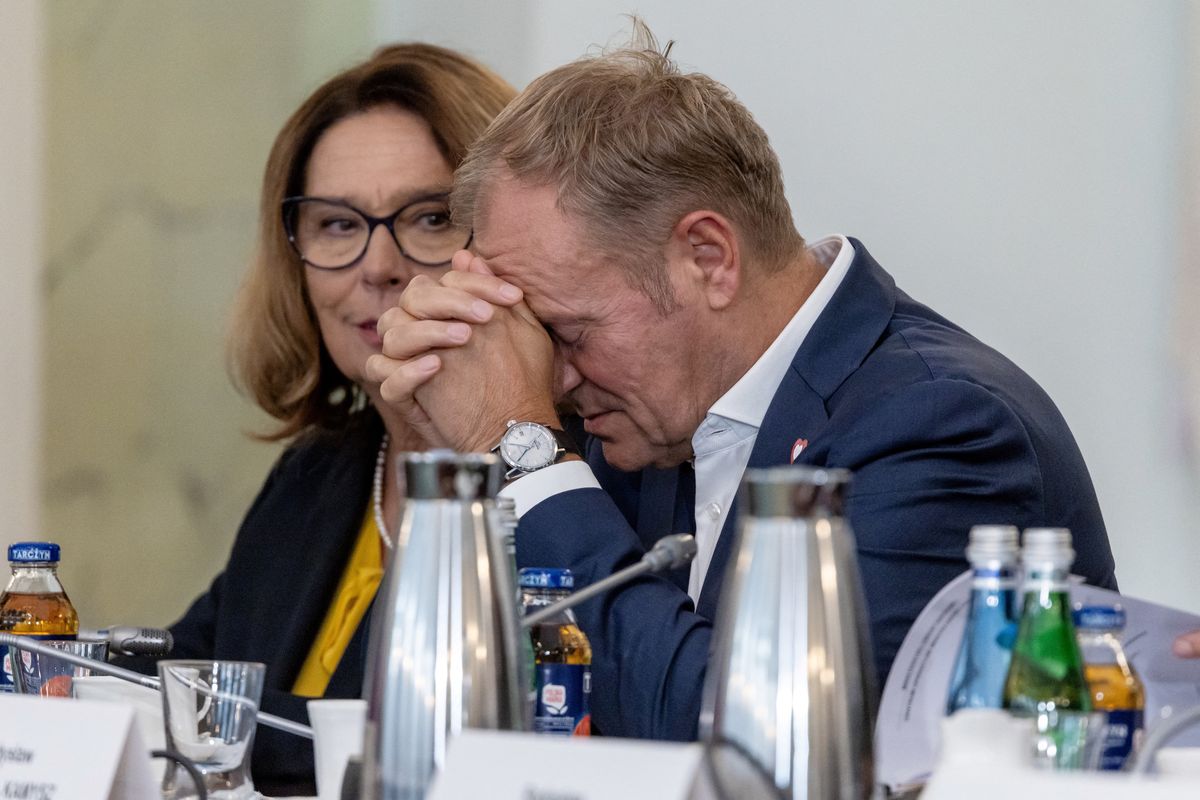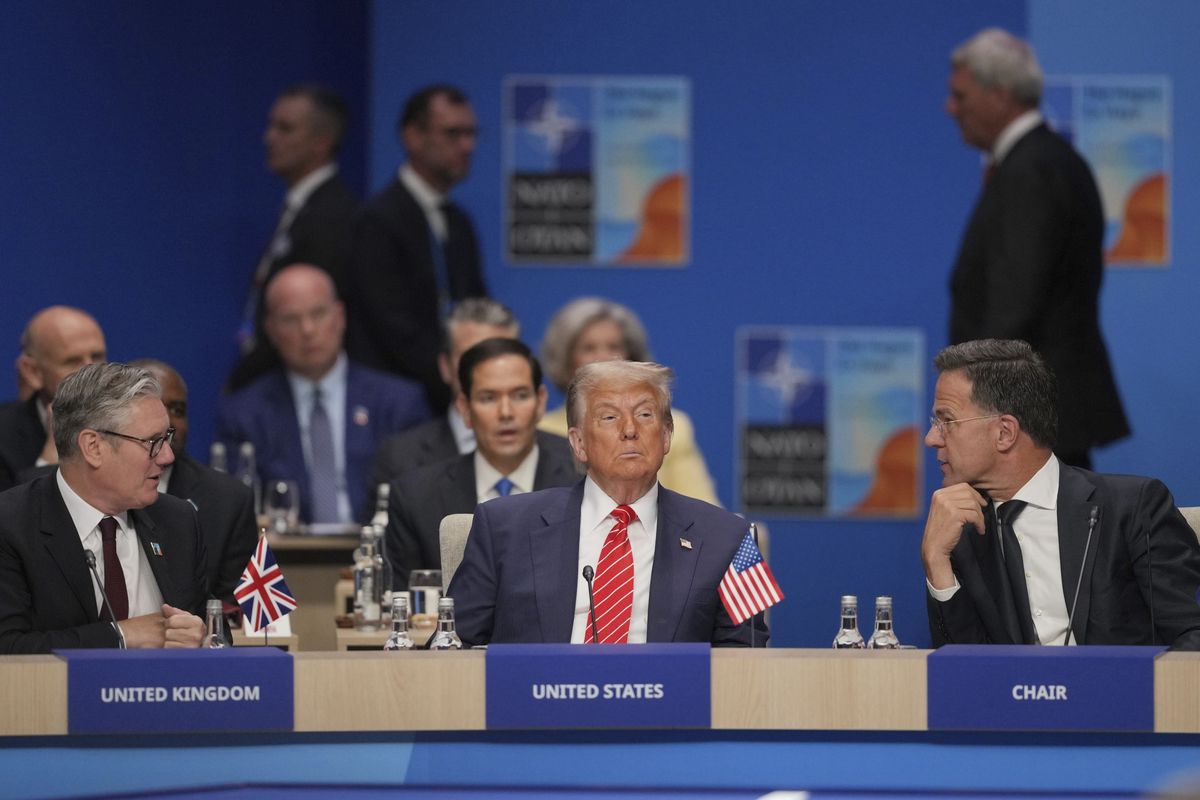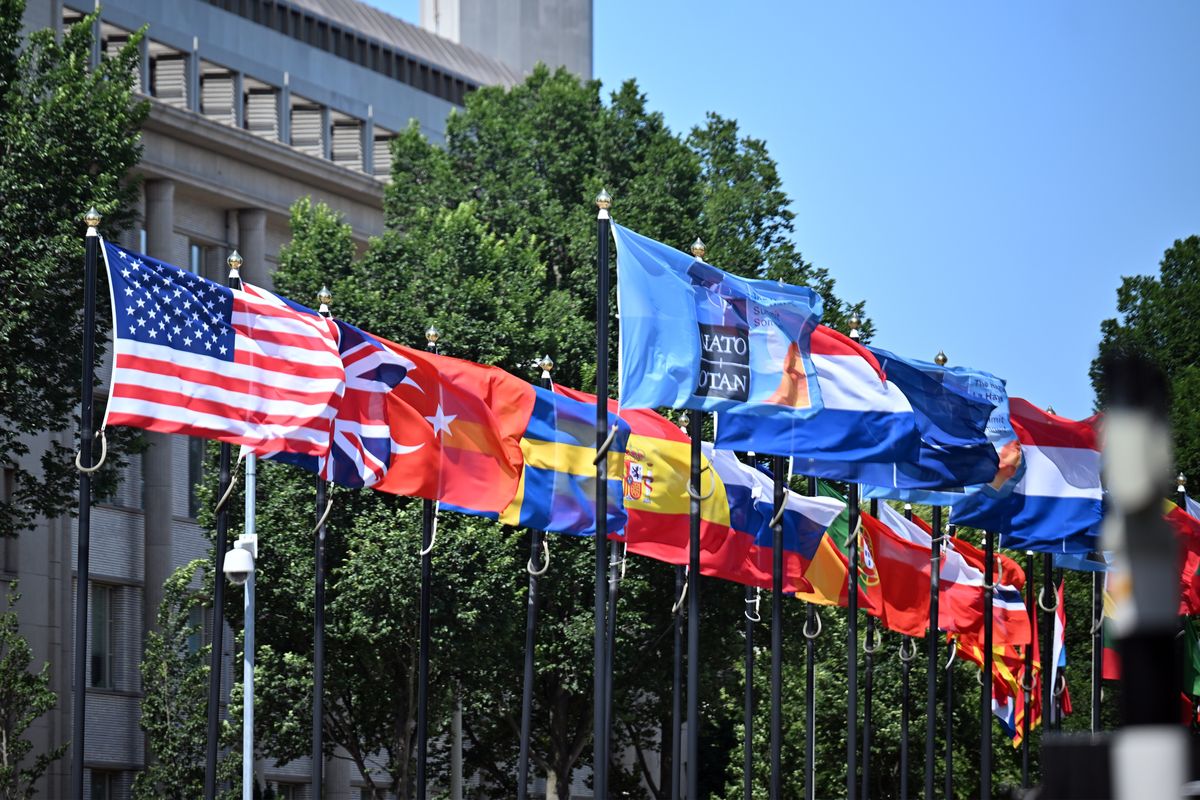Latvia – like neighbors Estonia and Lithuania – is increasing defense spending and working to build a coordinated defense. This year, NATO member states, including the U.S., are deploying troops to be stationed in each of the Baltic nations, as a deterrence to Russia. Latvia’s State Secretary at the Ministry of Defense Jānis Garisons tells The Cipher Brief the Baltics also cooperate on procurement and even have a joint Baltic Defense College. The Cipher Brief’s Kaitlin Lavinder spoke with Garisons about these and other Baltic defense developments.
The Cipher Brief: Did Latvia increase defense spending starting in 2014, as a recent IHS Markit report suggests, or did the increase start before that? And why?
State Secretary Jānis Garisons: We had already a quite high percentage of GDP going to defense in 2005 and 2006. We were close to 2 percent immediately after joining NATO in 2004. But then in 2008, we went through quite a deep economic recession. In 2008 and 2009, public spending was actually cut because of the economic and financial crisis. And the defense budget at that point was cut almost by half – to 1 percent of GDP – those were quite difficult times for us because we had to reform and we had to rearrange many contracts because we cut a really dramatic 50 percent of defense spending in two years. And then when we got out of this economic crisis in 2010 and 2011, defense spending started going up.
Of course it was not so significant as it is now. We saw that something is going on in our neighborhood which we don’t like so much: in 2014, when Russia occupied Crimea, and before that in 2013, when the Russians and Belorusians held the Zapad Exercise in September 2013, with quite a big number of forces engaged in the Baltic Sea and over our eastern border. The numbers of that exercise were quite impressive. Our estimate was that 100,000 were engaged. Therefore, we realized that Russia has not only capabilities but also the intent to use force.
Before this, parliament already passed a law to increase defense spending to 2 percent of GDP by 2020. But for Latvian society, to have the occupation of Crimea and then the war in Donbass, this reminded us of the occupation of 1940 – there was quite a big shock for some of society. So in 2014, the political parties agreed to reach this spending goal earlier, by 2018. Last year, the increase in defense spending was 45 percent (1.4 percent of GDP), and this year more, than 20 percent growth will occur. We are already at 1.7 percent – next year, we will hit 2 percent, as parliament already approved the law on the budget.
TCB: Two follow up questions: One, were the budget cuts to defense back in 2008 and 2009 proportionate to cuts in other areas of the government and, two, where are these recent increases going – so with the 20 percent increase this year, how is that money being used?
JG: Well the defense cut was relatively proportionate because all public spending was cut – the number of personnel in ministries everywhere was cut. But defense probably experienced a little bit more of a dramatic cut than some other areas because always, of course, social issues and things like that are much more difficult in times of crisis, when you are already facing social problems. But what is important from the crisis was that we were able to reform our system and make many things more efficient. Never miss a crisis. And we didn’t miss this one; we reformed the system and made it more efficient. But now, of course, we have to realize that it’s much more difficult to expand the armed forces because of the cuts we made previously.
On the second question, we already in 2012 approved a development plan for the armed forces and have been following that since then. What we are doing is investing in early warning systems, we’re procuring radars. Two years ago, we signed the contract with Lockheed Martin, and the first radar will be received this year to cover low-level flights. We already finished the system of long-range radars, also from Lockheed Martin. Then, there’s a mechanization project going on for the procurement of armored vehicles. A Special Operations Force has been developed. This year, additional money will go to developing indirect fire – so we will procure artillery systems, mortars, and some combat ability things like combat engineers, command and control. But also this year we have to fund host-nation support for the Canadian-led NATO battalion that will deploy to Latvia. For our size, quite a lot of infrastructure is needed.
TCB: Can you expand upon that a little – what infrastructure?
JG: Starting from barracks and communication, and ending with maintenance facilities, storage, warehouses, and things like that.
TCB: And when are the Canadian troops supposed to be deployed?
JG: According to the plan, the Canadian troops will start arriving this May and full operational regiments will be achieved sometime in July or August this year.
TCB: And is it correct to understand that deployment as solely focused on NATO’s goal of deterrence vis-à-vis Russia?
JG: Yes.
TCB: Latvia’s Home Guard plus these deployed NATO forces would obviously not be enough to respond to an actual incursion in the country – so what happens if that occurs?
JG: We have to defend our country with those resources that we have and, therefore, we are working to improve the readiness of those forces. We increased the number of professional soldiers by 500 last year, and we are actually increasing that number next year in 2018 as well. We have currently 5.5 thousand soldiers, and the goal is to reach 6.5 thousand in 2018. We are also training the National Guard, which has 9,000 members. They are territorial based and they are first responders, also when it comes to local communities. And of course, the NATO battalion will be deployed.
What is needed is clear signs and a clear commitment that we will defend our country if anything happens. This should be a clear signal that there are some forces, but more forces will be engaged if needed. We never had this kind of goal to replicate the same numbers as the Russians because it’s unnecessary. I think this is the meaning of the decisions made in previous NATO summit, to deploy troops to the Baltics.
TCB: Is there any concern in Latvia about President-elect Donald Trump’s comments on NATO?
JG: First of all, we believe in U.S. leadership. We know that the United States didn’t recognize the occupation of the Baltic states for 50 years – that was a very constant policy. We also know the United States kept engagement in the Baltic states, including in the beginning of the 1990s, when Russian forces withdrew. Therefore, we don’t question U.S. leadership.
The second point is I think we never regarded ourselves as being free riders in NATO, even with those budget cuts we experienced in 2008. We were heavily engaged in Afghanistan with the U.S. and other allies. We had joint deployments with the Michigan National Guard, which are our brothers in arms now – we participated in the same battles and had common losses.
TCB: Going back to procurement and the specific procurements you mentioned earlier – can you explain the process? Are these bilateral procurements with, for example, Lockheed Martin? Or do you engage in joint procurements with, for example, Estonia and Lithuania? Also, how are you involved in the European Union’s overarching procurement system?
JG: Usually we choose the most efficient way. We have had joint procurements with the Baltic states. We recently had the joint radar procurement with Estonia, for example. We also had joint procurements in munitions with all three Baltic states. Some are bought through the NATO procurement agency, for example a big part of munitions. But a big part of specific capabilities is bought through bilateral deals – either government to government or private contracts with specific industries. It depends on the circumstances because sometimes it’s easier to do government-to-government contracts, or it’s more efficient to buy directly from the industry.
TCB: Do you foresee any kind of integrated command structure with Estonia and Lithuania in the future?
JG: Well, we already kind of have that when it comes to Baltic cooperation because we have the Baltic Defense College. In our national defense academies, we educate only the first level of officers – the junior level. The rest is in the Baltic Defense College.
We have also a joint system where all radar data is fed in. There are many things happening in Baltic defense cooperation. Sometimes, I hear Nordic cooperation is quite advanced, but I think if you look at what we’ve been able to achieve, nobody has gone so far as Baltic defense cooperation. We already established a few years ago a joint staff element, which is involved in coordinating some operational planning among the Baltic states and, when needed, engaged in some operational issues.
Of course, the ambition from our perspective would be to develop this command element, especially because of NATO forces. We have to coordinate between national forces and NATO forces when they arrive, but also among the Baltic states together. The challenge and limitation is on our side, we have quite limited manpower. Every time you set up new headquarters, you need a lot of new officers and that is a challenge for all the Baltic states.
TCB: Why are the Baltics so advanced in defense coordination – is it because of the manpower factor, because together you have more numbers?
JG: Historically, it’s because there were, in the beginning of the 1990s, quite a lot of countries engaged in helping us to develop national defenses. And they were very hard on pushing at Baltic cooperation. And from other side, we recognize that our resources are not sufficient to develop a full spectrum of forces. Therefore, whenever we can do something together we always try to proceed that way and develop joint projects.
TCB: In the Ministry of Defense statement that Latvia’s Defense Attaché in Washington, Colonel Roga, sent to me and in this conversation, you mentioned Russia and terrorism in the south as two of the biggest issues for Latvia. What about cyber – where does that play into the list of threats?
JG: It’s part of what we can call asymmetric threats or hybrid threats. But in our situation, it’s not only about cyber, but also information warfare, technological warfare. Some countries realize now that this is a problem. We’ve been facing information warfare for years already and we have to deal with that on a daily basis with fake news, fake internet accounts, where cyber and information warfare are basically combined.
The great military strategist Sun Tzu said that to get victory is to defeat the enemy without the battle. And what does that mean? In the current situation, to affect your society’s mind to the extent that you don’t have to use military force. You can build the best army, but if your society doesn’t believe in the values of the state and if society is not ready to defend the country, then nobody will be able to help you because the most precious value is your people. Therefore, this information warfare and cyber composed together actually causes quite significant worries for us. But we are dealing with that and we deal with it on a daily basis.
TCB: Is there a coordinated unit within the ministry to deal with that specifically?
JG: When it comes to cyber, the ministry is actually responsible for both civilian and military cyber issues. Besides that, we have as reinforcement if there is a more significant crisis, a national guard cyber unit which is made up of volunteers from private companies who receive training. These work together with our information strategy and with NATO’s Strategic Communications Center of Excellence in Riga.












